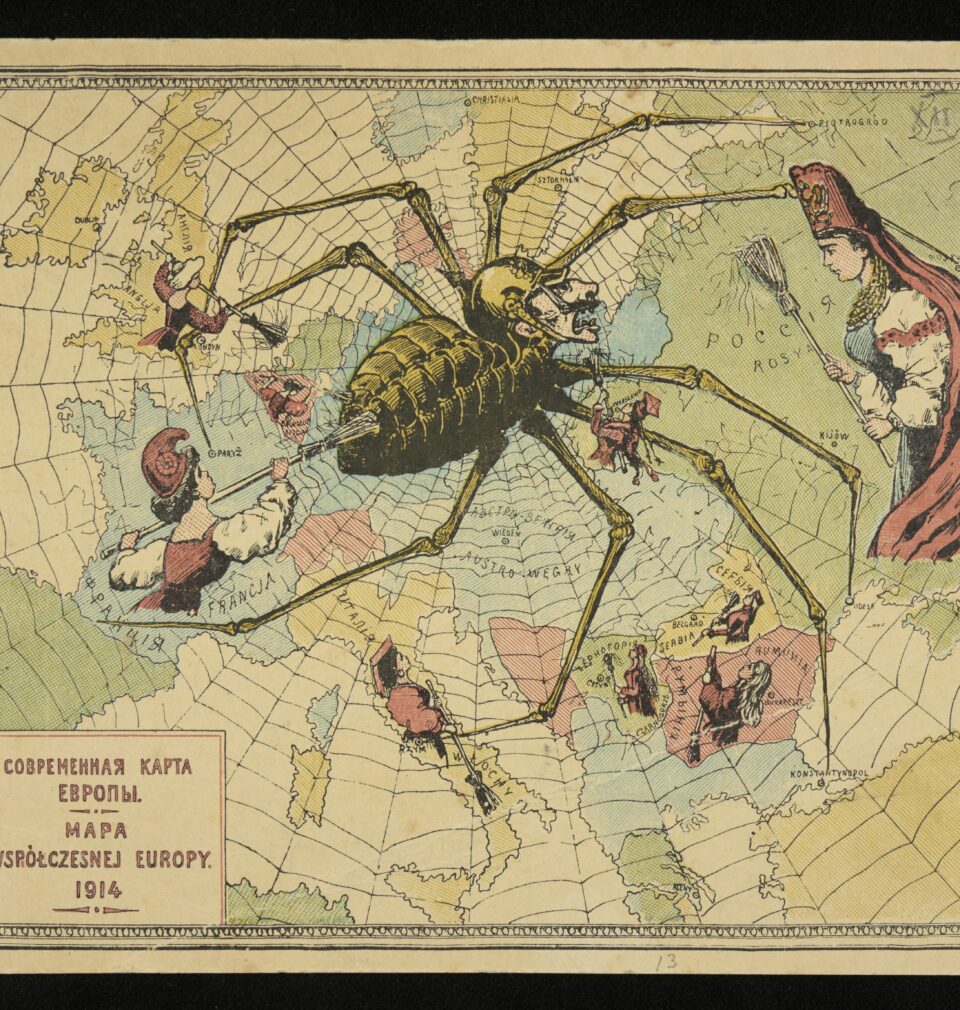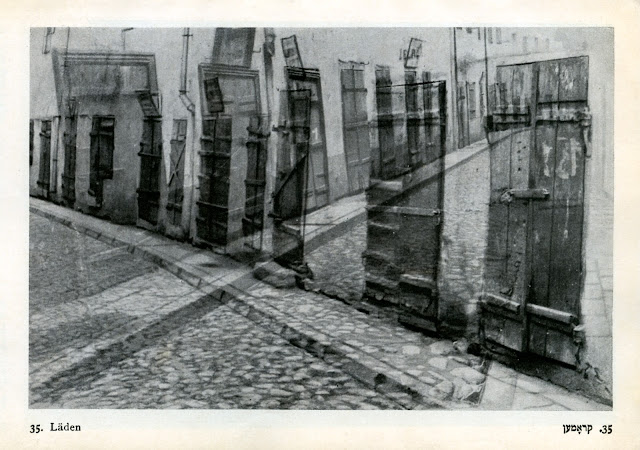
Nations - History and Memory
“Memory Links” and the Image of Independent Poland
Publication: 14 October 2021
TAGS FOR THE ARTICLE
TO THE LIST OF ARTICLES“Link” implies that there is something to be connected with: a network, a sequence, a chain. The realm of memory and of remembering, whether individual or collective, is most easily visualised as a spatial web with innumerable connections and intersections.
It does not take much introspection to realise that when we remember something – an event, a date, an image – we place it in the context of other events and images. Even an evidently ahistorical experience like medical treatment we recollect within the structure of a setting (thus, I associate my first hernia surgery at the Radcliffe Infirmary, Oxford: with unpalatable food, the nerve-racking clatter of trolleys loaded with cans of pitch-black and pitch-tasting tea at 6.30 am; the second at Avallon in Burgundy, with motherly nuns in cornets and wine with meals; the last, in Warsaw, with primitive but clean premises, food best forgotten, the surgical procedure discussed at length before the operation, in the event interminably long, and ultimately successful). The action of Isaac Bashevis Singer’s novels is set in Warsaw and Lublin, on the same rivers, under the same castles, but for their Jewish and Polish readers in completely different, even foreign, environments. Polish Lwów and Ukrainian Lviv lie at the same geographical latitudes and longitudes – but for people remembering 1945 are almost entirely different cities: linguistically, culturally, and socially (there was virtually no Ukrainian middle class there). I would say that these places exist in human memory within different (if interconnected) associative networks, culturally and nationally defined.
The places (loci) where the lines of these networks connect, often multilplex way, I call “memory links” (węzły pamięci in Polish, nœuds de mémoire in French)[1].
The concept is, of course, indebted to the famous French series conceived and edited by Pierre Nora Les lieux de mémoire (1984–1992). The basic term lieu is notoriously slippery and difficult to translate, as it does not connote a physical site; in Nora’s seven volumes entries under geographical references make up no more than 10% of the text and appear side by side with entries like “La Marseillaise”, “Mourir pour la patrie”, “gastronomie”, “Jeanne d’Arc”, and “La recherche du temps perdu de Marcel Proust”. Taking note of this difficulty, the Polish historian Marcin Kula proposed nośnik pamięci, a memory conveyor or transmitter. This term aptly reflects the practical function of a lieu, but has two weak points. One is in suggesting a transmission from one agent (source) to another (recipient), which seems to me misleading. The other, otherwise shared with lieu, is that it does not imply the existence of any context: un lieu does not seem to need an environment. In other words, it does not suggest a language (or framework of references) within which the term is to be understood. Nora’s claim that there is something uniquely French in the very term lieu which makes it impossible to be rendered in other languages may be true[2]. However, since American, German, or Polish historians have never had any difficulty either in understanding Nora’s intentions or in finding in their own national cultures the exact equivalents of phenomena like La Marseillaise or “Le 14 Juillet”, or “Les trois couleurs” – it appears that l’exception française of lieu consists in its semantic ambiguity. (To be more precise: the noun lieu does not suggest that it performs any function, while the only difference between being or not being a lieu within Nora’s conceptual framework consists in functioning in a certain manner.)
That is why I have proposed an alternative concept, more overtly metaphorical and at the same time semantically clearer. “Link” implies that there is something to be connected with: a network, a sequence, a chain. The realm of memory (which is the title of the first English translation of Nora’s work) and of remembering, whether individual or collective, is most easily visualised as a spatial web with innumerable connections and intersections.
From the psychological point of view we see two kinds of remembering (which, roughly, correspond to Daniel Kahneman’s well-known systems of “fast” and “slow” thinking[3]): we recollect something either 1. because we need it at the moment in looking for support for our decisions or 2. because it is there within our experienced or learned store of factual data. The first kind is immediate, quick, presented for a purpose. The latter is consciously put together, may be unpleasant or inconvenient, is sometimes better to be forgotten – but still there, to be ignored only thanks to a decision (or perhaps a subconscious urge to forget, as is the case with traumas). And what applies to particular facts also applies to whole sets or networks of them.
Let us assume that I hear the noun “Verdun” mentioned. I immediately associate it with the First World War; personal experience evokes images of visiting the remnants of Fort Douaumont, la Voie Sacrée, rusted long bayonettes sticking out of the ground where soldiers in their trenches were buried by a huge artillery shell, etc.; pursuing the same line of associations I wander farther towards the le tricolore, and then to Mourir pour la Patrie; a deeper reflection leads me to Pétain, stumbles upon the Vichy Republic, and follows to de Gaulle and his presidential pardon for his old and senile commandant. This is how memory links work. Why are some of them chosen to be de-scribed in detail while others are not? Well, that is a matter of assessment: which of them, functioning like a railway or road junction, seem to offer more connections than others and which stand (or stood) out in the collective memory.
I began to think about all that in early 2010 thanks to inspiration taken from Nora’s imposing volumes, and more directly from Tony Judt’s brilliant, sympathetic essay about them, “À la recherche du temps perdu: France and Its Pasts”[4]. Suddenly, I realised something simple and important: true, France had changed, even under my own eyes since I saw it first in 1957, decrepit and subdued after the war. But in the course of the lives of men and women of my generation, who started school before 1939, Poland has changed much more radically and irretrievably. A country with one thousand years of cultural, political, and geographical continuity was in 1945 moved, like a piece of furniture, at once geographically westwards and politically eastwards. From a traditionally multi-cultural, multi-ethnic country[5] it suddenly became (due also to the intervening Holocaust) ethnically the most homogeneous country in Europe. The political, cultural and geographic continuity which had lsted nearly a thousand years was suddenly and irrevocably broken.
For several centuries, even during the 123 years of partition and foreign rule, nobody – at least no Poles – thought about Poland without Lwów and Wilno. Today nobody thinks or dreams of a reconquista, but the history and architecture of both cities constitute an unalienable element of Polish culture. The action of our national epic poem, Mickiewicz’s Pan Tadeusz, which every Polish child has known for generations, unambiguously takes place in “Poland” – but just as unquestionably on the present territory of Belarus and Lithuania. Its author never even visited Warsaw or Krakow… Another outstanding Polish poet, Juliusz Słowacki (1809–1849), is at the same time the greatest writer of his native Ukraine (un-till 1791 a part of the Polish Commonwealth), which he wanted to represent, although he did not know Ukrainian, felt Polish and wrote only in Polish (occasionally in French). Sites like Kamieniec Podolski (now in Ukraine) or Lake Świteź (now Belarus) cannot be excised from our history and cultural mythology. One can easily multiply such examples. As yet, nobody has tried to reconstruct a collective image of that Po-land, for which so many hundreds of thousands were ready to fight and die during the Second World War – in the Polish underground Home Army, in Soviet prisons, on battlefields from Warsaw to Monte Cassino, Narvik and Tobruk.
This is the goal undertaken by a team of 180 authors in the book “Węzły pamięci Polski niepodległej” (Memory Links of Independent Poland).
Here is a sample of some of the more than 400 entries that make up the volume (no personal names are included as the information about personal data is most easily accessible; most entries refer to geographical names: whatever physically happens, happens somewhere): September 17th 1939; anti-Semitism, Bank Polski; Berdyczów; Biuro Informacji i Propagandy KG AK (Bureau of Information and Propaganda, a branch of the Supreme Command of Home Army, the main Polish underground organisation 1940–1945); Boże Ciało (Corpus Christi); Café Szkocka (in Lwów); the Constitution of 3rd May 1791; Dąbrowski’s Mazurka (the Polish national anthem); Deportations; Dwór szlachecki, Electio viritim; Elster river; Falaise; France; Gdynia; Gloria victis; Grodno; Harcerze (the Scouting Movement); Hotel Lambert (Paris); Jedwabne; Katyń; Collaboration; Krzemieniec; Majdanek; Freemasons; Northolt; Obywatel (citizen); Okhrana; Ossolineum; Pieczątka Rządu Narodowego (Seal of the Polish National Government, 1863); Polish Underground State 1939–1945; Rzeczpospolita (Commonwealth); Somosierra; Targowica; the Union of Lublin; La Varsovienne; Warszawa – Zamek Królewski (the Royal Castle); University of Wilno; Żelazowa Wola. There are a few entries in the form of reminiscences, notably one by Professor Maria Straszewska, who for four years from 1941 to 1945 was secretary of Biuletyn Informacyjny, the official weekly of the Supreme Command of the Polish (underground) Home Army. There is a conversation between Zbigniew Brzeziński and me on the traditions of Polish irredentism.
Our 180 authors represent a broad range of professional historians, active or retired professors at various Polish universities; as well as sociologists, philosophers, historians of literature, military officers. They come from a few consecutive generations of scholars, belong to different schools, follow different research methods and represent various shades of present-day political tendencies. They have joined the project spontaneously and with a great deal of enthusiasm. After a while, the Museum of Polish History has offered us logistical support and money for Spartan fees.
Included in the volume are 80 pages with some 200 photographs, most of them never published, which illustrate the visual reality of Poland 1918–1945, We are planning to publish this substantial volume on the 200th anniversary of the January Insurrection of 1863, which constituted the last surge of the old multi-ethnic Polish Commonwealth of several nations and later became the cornerstone of the founding myths of the Renascent Poland.
***
[1] Zdzisław Najder, “Węzły europejskiej pamięci”, in: Szkice i eseje na dwudziestolecie Międzynarodowego Centrum Kultury, Kraków 2011, p. 222.
[2] Pierre Nora, “La notion de ‘lieux de mémoire’ est-elle exportable?”, in: Lieux de mémoire et identités nationales, ed. Pim den Boer and Willem Frijhofff, Amsterdam 1993, p. 4.
[3] The recent recapitulation: Kahnemann Daniel, Thinking, Fast and Slow, London 2011, passim.
[4] Tony Judt, “À la recherche du temps perdu: France and Its Pasts”, in: Reappraisals: Reflections on the Forgotten Twentieth Century, London 2009, pp. 196-218. Originally a review of Nora’s volumes.
[5] For an excellent description of the First Polish Commonwealth (of several nations) see Timothy Snyder, The Reconstruction of Nations: Poland, Ukraine, Lithuania, Belarus 1569-1999, New Haven & London 2003.
Copyright © Herito 2020



